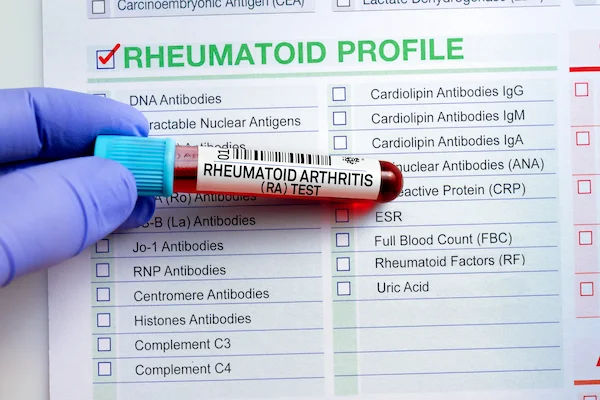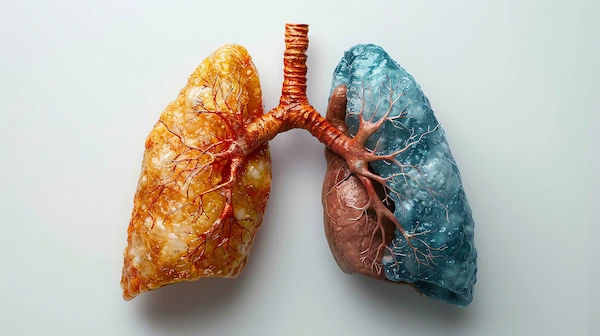CRP Test: Common Vials Explained
Know about crp test vials. What is crp, different vial colours, uses of vials and uses. Learn how to interpret the crp test results.

Written by Dr. Vasanthasree Nair
Reviewed by Dr. Rohinipriyanka Pondugula MBBS
Last updated on 20th Aug, 2025

Introduction
If you’ve ever been asked to take a C-reactive protein (CRP) test, you might have noticed different coloured vials being used for blood collection. This can be confusing—why are there different vials, and what do they mean? In this article, we’ll explain everything you need to know about the CRP test, why it’s done, and what those coloured vials signify.
What Is a CRP Test?
The CRP test measures the level of C-reactive protein in your blood. CRP is a protein produced by your liver in response to inflammation. High CRP levels can indicate infections, chronic diseases, or other inflammatory conditions like arthritis, lupus, or even heart disease.
Doctors often recommend this test if you have symptoms like:
- Fever
- Fatigue
- Unexplained pain or swelling
- Frequent infections
- Suspected autoimmune disorders
Consult haematologist for advice
Why Are Different Colored Vials Used?
When you give a blood sample for a CRP test, the lab technician may use different coloured vials. Each color represents a specific type of blood collection tube with different additives to preserve the sample. Here’s what they mean:
1. Red-Top Vial (Plain Tube)
- No additives – Used for serum separation.
- After blood is drawn, it clots naturally, and the serum (liquid part) is separated for testing.
- Commonly used for standard CRP tests.
2. Gold or Tiger-Top Vial (SST – Serum Separator Tube)
- Contains a gel separator that helps separate serum from blood cells quickly.
- Used for tests requiring fast serum separation, including CRP.
3. Green-Top Vial (Heparin Tube)
- Contains heparin, an anticoagulant that prevents clotting.
- Used for tests requiring plasma (the liquid part of unclotted blood).
- Sometimes used for high-sensitivity CRP (hs-CRP) tests, which detect very low levels of inflammation linked to heart disease risk.
4. Lavender-Top Vial (EDTA Tube)
- Contains EDTA, another anticoagulant.
- Mostly used for complete blood count (CBC) but can also be used for certain CRP tests if plasma is needed.
Which Vial Is Used for CRP?
Most commonly, red-top or gold-top vials are used for standard CRP tests. If your doctor orders a hs-CRP test, they might use a green-top vial. The lab technician will choose the right one based on the test requirements.
How Is the CRP Test Done?
The test is simple and quick:
1. A small blood sample is taken from your arm.
2. The blood is sent to a lab for analysis.
3. Results are usually available within a few hours to a day.
Understanding Your CRP Test Results
The CRP levels can be classified as normal, moderate and high:
Normal CRP Level: Less than 10 mg/L (indicates low inflammation).
Moderate Elevation (10-100 mg/L): May suggest infections, mild inflammation, or chronic diseases.
High CRP (>100 mg/L): Could indicate severe infections (like bacterial infections) or autoimmune diseases.
For hs-CRP (heart disease risk assessment):
- Low risk: Less than 1 mg/L
- Average risk: 1-3 mg/L
- High risk: More than 3 mg/L
What Can Cause High CRP Levels?
- Infections (bacterial or viral)
- Autoimmune diseases (lupus, rheumatoid arthritis)
- Chronic inflammation (diabetes, obesity)
- Heart disease risk (high hs-CRP)
- Injuries or surgery
How to Lower CRP Levels Naturally
If your CRP is high due to inflammation, these lifestyle changes may help:
- Eat anti-inflammatory foods – Fruits, vegetables, nuts, fatty fish (salmon), olive oil.
- Avoid processed foods & sugar – These can increase inflammation.
- Exercise regularly – Moderate activity helps reduce inflammation.
- Manage stress – Yoga, meditation, and deep breathing can help.
- Quit smoking & limit alcohol – Both contribute to inflammation.
When Should You Get a CRP Test?
Consult your doctor if you experience:
- Persistent fever or fatigue
- Unexplained joint pain or swelling
- Symptoms of infection (high fever, chills)
- A history of heart disease (for hs-CRP)
Final Thoughts
The CRP test is a simple but powerful tool to detect inflammation in your body. The different coloured vials ensure your blood sample is processed correctly for accurate results. If your CRP levels are high, work with your doctor to identify the cause and take steps to improve your health through diet, exercise, and proper treatment.
Consult haematologist for advice
Consult haematologist for advice

Dr.sanchayan Mandal
Medical Oncologist
17 Years • MBBS, DrNB( MEDICAL ONCOLOGY), DNB (RADIOTHERAPY),ECMO. PDCR. ASCO
Kolkata
Dr. Sanchayan Mandal Oncology Clinic, Kolkata

Dr Ankit Kumar
Haematologist
8 Years • MBBS, MD(Pathology), DM (Clinical Haematology)
Gurugram
The DermHaem Clinic, Gurugram

Dr. Sonal Paul
Haematologist
9 Years • MBBS, MD Pathology, DM Clinical Haematology
Kolkata
SATKRIT HEALTHCARE - A MULTISPECIALITY CLINIC, Kolkata

Dr. Ramalinga Reddy
General Physician
5 Years • MBBS MD General medicine
Bengaluru
PRESTIGE SHANTHINIKETAN - SOCIETY CLINIC, Bengaluru

Dr Abilash Jain
General Physician/ Internal Medicine Specialist
12 Years • MBBS,DNB(FM),MNAMS,FIAMS,CCGMG(GERIATRICS),DGM (GERIATRICS),PGCD(DIABETES,BOSTON UNIVERSITY),FID(DIABETICS UK)CCEPC(PALLIATIVE CARE),CCCC(CRITICAL CARE)
Visakhapatnam
Apollo Clinic Vizag, Visakhapatnam
Consult haematologist for advice

Dr.sanchayan Mandal
Medical Oncologist
17 Years • MBBS, DrNB( MEDICAL ONCOLOGY), DNB (RADIOTHERAPY),ECMO. PDCR. ASCO
Kolkata
Dr. Sanchayan Mandal Oncology Clinic, Kolkata

Dr Ankit Kumar
Haematologist
8 Years • MBBS, MD(Pathology), DM (Clinical Haematology)
Gurugram
The DermHaem Clinic, Gurugram

Dr. Sonal Paul
Haematologist
9 Years • MBBS, MD Pathology, DM Clinical Haematology
Kolkata
SATKRIT HEALTHCARE - A MULTISPECIALITY CLINIC, Kolkata

Dr. Ramalinga Reddy
General Physician
5 Years • MBBS MD General medicine
Bengaluru
PRESTIGE SHANTHINIKETAN - SOCIETY CLINIC, Bengaluru

Dr Abilash Jain
General Physician/ Internal Medicine Specialist
12 Years • MBBS,DNB(FM),MNAMS,FIAMS,CCGMG(GERIATRICS),DGM (GERIATRICS),PGCD(DIABETES,BOSTON UNIVERSITY),FID(DIABETICS UK)CCEPC(PALLIATIVE CARE),CCCC(CRITICAL CARE)
Visakhapatnam
Apollo Clinic Vizag, Visakhapatnam
.webp)


_0.webp)
